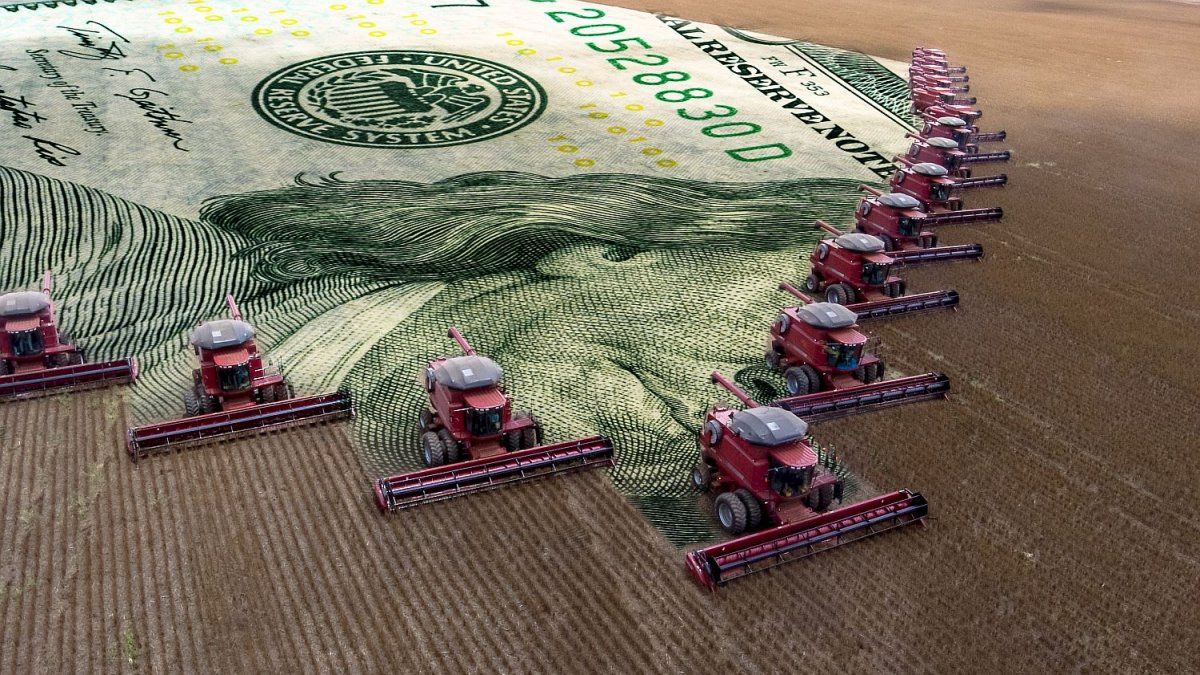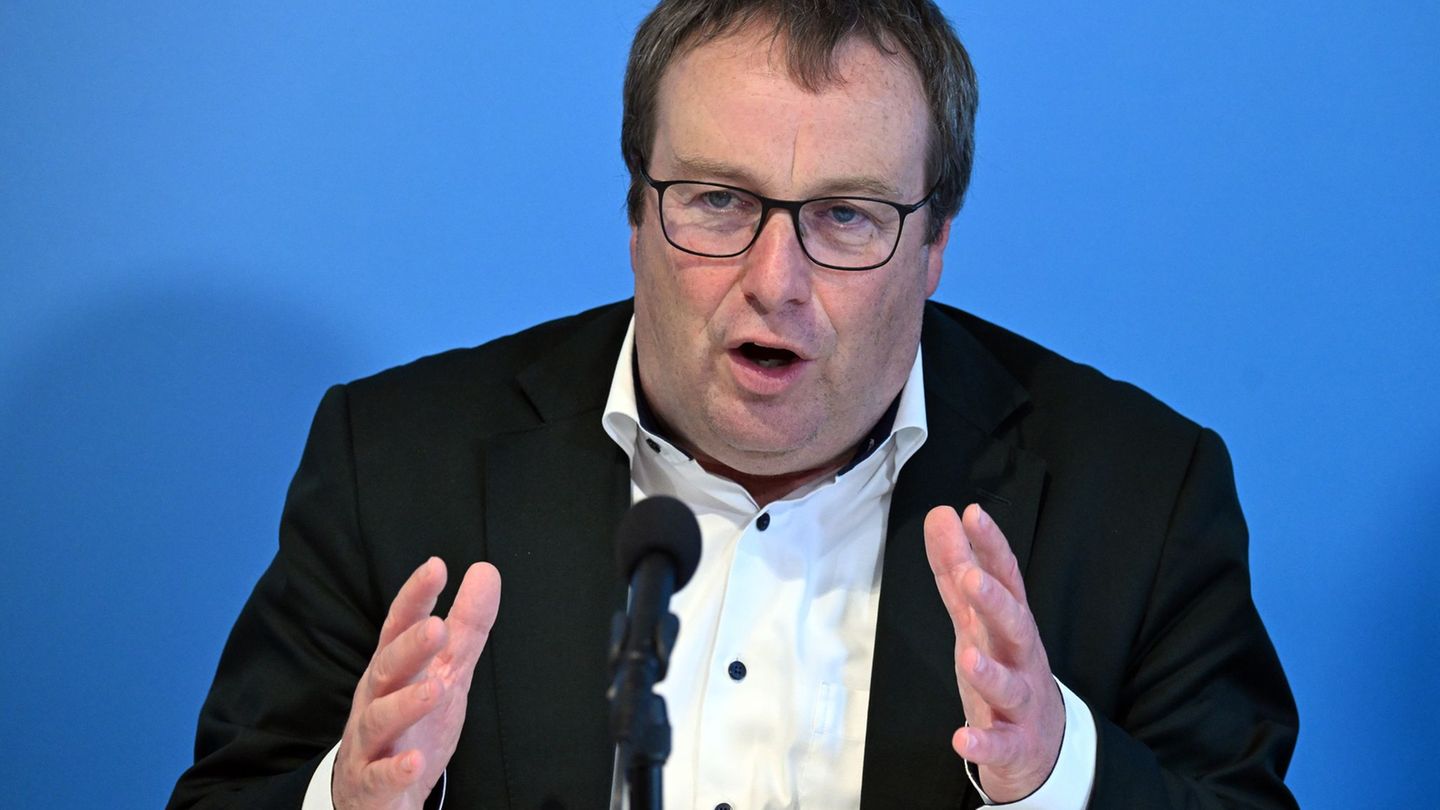Federal budget
This is what Klingbeil’s billions of dollars for Germany look like
Copy the current link
Add to the memorial list
Lars Klingbeil presents his first financial planning as the new treasurer of the coalition. Billions of investments are planned, as well as a massive growth of defense spending.
It is his first household and therefore an important test. Can Lars Klingbeil finance minister? The principles that penetrate from his house almost sound like routine: investing, reforming, consolidating – many of his predecessors have already made up for this. And now it should also be the triad of Lars Klingbeil’s financial planning for the next few years. Investments are planned in billions of bills, as well as an enormous growth of defense spending that follows star-Information to 3.5 percent of economic output (gross domestic product; GDP) by 2029.
On Tuesday, after only 49 days in office, the new finance minister from the SPD will bring the government draft for the 2025 budget into the Federal Cabinet. Then he wants to present the details to the budget committee and then the public. Then the consultations in parliament begin, also at a rapid pace.
Strictly speaking, Klingbeil presents the second government draft for the current budget year. The traffic light coalition broke out on the financial planning and has no longer brought the 2025 budget. Since the beginning of the year, provisional housekeeping has therefore been the case, which only provides compelling expenses.
The key values for the household years 2026-2029 are also to be decided on Tuesday, so to speak a first sketch, as the funds are to be distributed in the coming years. Everything is flanked by the so-called establishment law for the special infrastructure assets so that the total of 500 billion euros can flow into the streets and rails.
Ministry of Finance of Lars Klingbeil wants to trigger “important modernization of modernization”
This year alone, “record investments” of around 115 billion euros are to flow, according to government circles on Monday. We are talking about an “important modernization boost”, which is necessary due to the continuing weakness of growth of the economy and a high level of investment in the infrastructure. This should ensure more growth and employment, and the economy as a result.
At the same time, however, “what the desired with the possible” had to be compared, it is also said to “considerable additional demands” from the ministries that would have amounted to almost 50 billion euros. Finance Minister Klingbeil has averted this to ensure a stable budget situation for the coming years.
However, this should hardly go through as a courageous consolidation. It is not yet foreseeable whether planned savings measures are substantial (or rather cosmetic in nature). Just as little as the planned investments will actually affect economic growth: after starInformation is currently being assumed for the years 2026 to 2029 from a growth of GDP of one percent each.
The federal budget in 2025 is said to have a volume of 503 billion euros, a significant growth of 6.1 percent compared to the previous year (budget 2024: 474.2 billion euros), is to be experienced. The background to this is an increase in expenditure for defense, civil and population protection and the security infrastructure, according to government circles.
This is made possible by a higher net credit recording (NKA) due to the so -called area exception for defense, which was anchored in the Basic Law after the Bundestag election, but before the change of government with the votes of the Union, SPD and the Greens: the debt rules are softened for this area. Especially in 2028 and 2029, the corner values provide for a massive growth of government spending and an increase in the net credit recording – essentially because of the defense spending, according to government circles. Background: At the end of 2027, the special fund was exhausted for the Bundeswehr.
NATO rate of 3.5 percent is to be achieved in 2029
For example, 550.4 billion euros are currently planned for the 2028 budget (net loan recording: 115.7 billion), almost 574 billion euros for 2029 (net credit recording: 126.1 billion). Gigantic sums that are apparently also a signal to Russia’s President Vladimir Putin: Germany is no longer limited here.
The Federal Government faces the challenge of significantly strengthening the capabilities of state and alliance defense and complying with its shared responsibility for security in Europe, according to government groups. Together with the other federal defense expenditure, this resulted in a planned NATO rate of around 2.4 percent of GDP this year. According to the corner value deadline, this should grow in 2027, 3.3 percent in 2028 and 3.5 percent of GDP in 2029 in 2026, 3.0 percent.
According to the corner value deadline for 2028 – after leaving the Bundeswehr special fund, the defense expenditure would amount to 136 billion. For 2029 then to 153 billion euros. As early as 2025, an increase of 51.95 billion euros in the previous year was planned to EUR 62.4 billion, and in 2026 at EUR 82.7 billion. In addition, from 2025 to 2029 the aids for “states that are contrary to international law”, mainly of Ukraine, will be estimated at 8.5 billion euros each.
However, with the government draft for 2025, the business plan for the climate and transformation fund (KTF) is also to be decided. The volume of the program editions is around 36.6 billion euros, it is said. A major focus is on climate protection in the building area (16.5 billion euros), followed by the relief of consumers in energy costs (around 6.4 billion euros). Finance Minister Klingbeil should present more details on Tuesday. The economic plan for the new special fund infrastructure and climate neutrality is also decided. The federal government’s investments – without grants to the federal states and the KTF – would therefore be around 18.9 billion euros.
After the cabinet decision on Tuesday, the government draft for the 2025 budget will be forwarded to the Bundestag and the Federal Council on Thursday. In mid -September, budget consultations in parliament could be completed and the Federal Council finally approved the plans at the end of September. The budget for 2026 is to be decided on July 30th in the cabinet, it continues from government circles, and could then run through the finish shortly before Christmas.
Source: Stern
I have been working in the news industry for over 6 years, first as a reporter and now as an editor. I have covered politics extensively, and my work has appeared in major newspapers and online news outlets around the world. In addition to my writing, I also contribute regularly to 24 Hours World.






